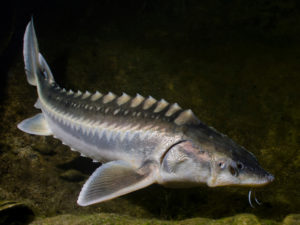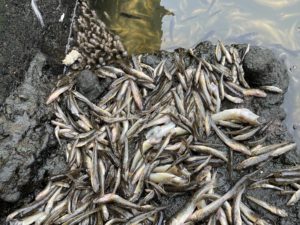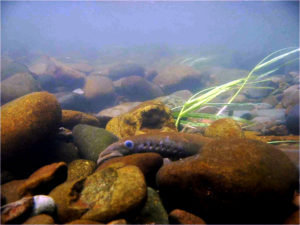Record-breaking rainfall drenched much of the Bay Area in late October and again around Christmas, leading to flooding, power outages, snarled traffic — and a great season for a fish that has had it rough in recent years.
For East-Bay bound, fall-run Chinook salmon, which rely on continuous pulses of fresh water to grant them passage to upstream spawning grounds, the October rain event could not have come at a better time.
“This year is a little bit of an anomaly, looking at the last 25 years,” said Jeff Miller, founder and executive director of the Alameda Creek Alliance. In recent years, rain in the Bay Area has often fallen outside of the fall-run Chinook salmon’s main spawning season. As a result, returning salmon have been unable to take advantage of the highest freshwater flows in those years, and they have faced drier conditions during their migratory runs.
But this year was different. Rain fell relatively early, priming waterways for the Chinook salmon’s migration inland. Alameda Creek, which usually sees a small handful of Chinook salmon in a typical migration season, instead saw roughly three to four dozen Chinook salmon this year, Miller said.

In making this journey, the fish leave behind the salt water of the Pacific Ocean, swim under the Golden Gate and scramble up streams to seek suitable freshwater habitats where they will spawn, lay eggs – a single salmon can lay up to 20,000 eggs – and eventually die.
During these seasonal migratory runs, most Chinook salmon are instinctively guided to the specific freshwater sites where they themselves hatched, often three or four years prior to their final return. The salmon spend most of the intervening time in the Pacific Ocean, dodging predators such as seals, sea lions, orcas and fishermen, and feeding on crustaceans and smaller fish such as anchovies.
“Scientists think that this incredible feat of salmon homing to their natal stream is largely owed to a keen sense of smell,” wrote George Neillands, senior environmental scientist supervisor for the California Department of Fish and Wildlife Bay-Delta region, in an email. “Salmon imprint on the unique chemical composition of the water in their natal stream and adult salmon recognize this information as a cue for homing during their migration.”
While the vast majority of Chinook salmon that enter the San Francisco Bay swim toward the Sacramento and San Joaquin Rivers, heading toward Central Valley hatcheries where many were hatched, Chinook salmon also sometimes stray toward other freshwater creeks of the Bay Area, Miller said. These routes include Alameda Creek, the Guadalupe River and Los Gatos Creek in the South Bay, and many others — pretty much “anything with a decent flow,” Neillands added.
This year’s South Bay salmon counts have been more consistent with previous years. Steve Holmes, founder and executive director of the South Bay Clean Creeks Coalition, said that his organization is on track to see 150-200 salmon this year along the Guadalupe River and Los Gatos Creek, and he notes that he “can only speculate” as to why South Bay numbers haven’t increased this winter in the way East Bay numbers have.

Even Lake Merritt, a tidal lagoon in Oakland which connects to the Bay via a flood control tidal gate operated by the Alameda County Flood Control District, saw around four Chinook salmon following the October rains. “Who would have thought there’d be Chinook salmon in Lake Merritt, and now here they are. It’s just totally amazing,” said Katie Noonan, co-chair of the Rotary Nature Center Friends. Noonan said that this isn’t the first time Chinook have been spotted at Lake Merritt, but large fish are rare sightings in the lake, and when they are spotted, it is cause for much excitement.
While the fall-run Chinook salmon migration has mostly ended, the smaller coastal Coho salmon is finishing its winter migratory run in waterways such as Lagunitas Creek in Marin. Neillands said that a Marin Municipal Water District email reported that, in two days in December, 195 Coho Salmon and 67 redds (spawning beds) were counted across Lagunitas Creek, San Geronimo Creek, and Devil’s Gulch — a good December for Coho salmon in these streams.
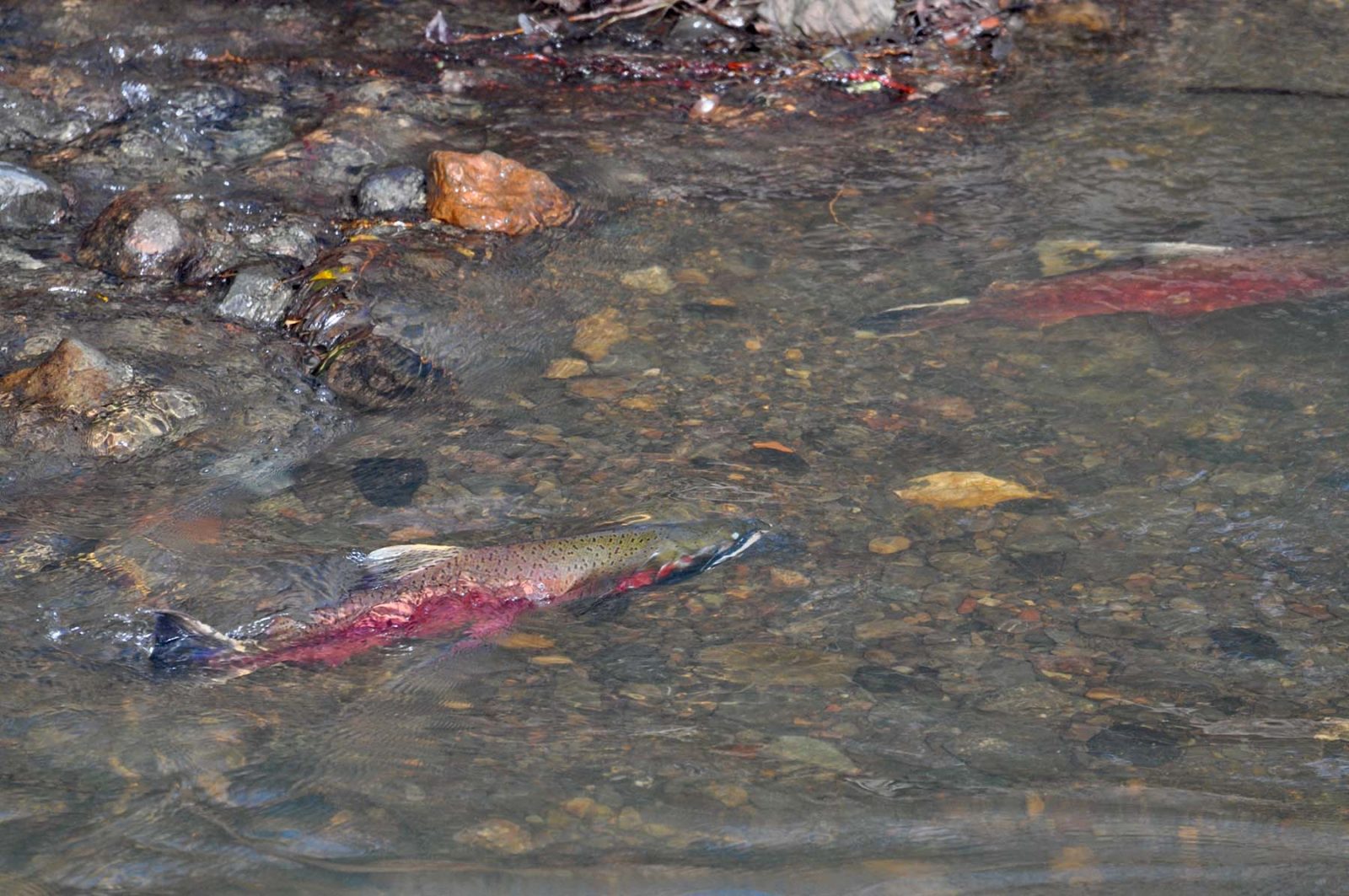
While Coho prefer coastal streams when migrating to spawn, fall-run Chinook salmon migrate inland, and their passage to suitable spawning habitats often takes multiple storms. Even with the October rain, many hurdles have continued to bar the progress of Chinook salmon seeking upstream sites in the Bay Area.
South Bay traveling Chinook salmon have to contend with large amounts of trash, particularly in highly developed parts of the San José area, Holmes said. Noonan said trash around Lake Merritt also challenges the wellbeing of the lake’s fish and wildlife.
Additionally, Holmes said that drought-stressed land tends to readily absorb the first rainwater of the year, leaving less water available to contribute to the consistent freshwater flows that fall-run salmon depend on in order to move upstream. Sometimes there is just “a feather of a river” through which only the smallest fish can successfully swim, said Holmes.
For East-Bay-bound Chinook that swim up Alameda Creek, an impassable 12-foot cement BART weir forms an “absolute barrier,” preventing all migratory fish other than the sucker-endowed lamprey from accessing the higher quality waters upstream, Miller said.
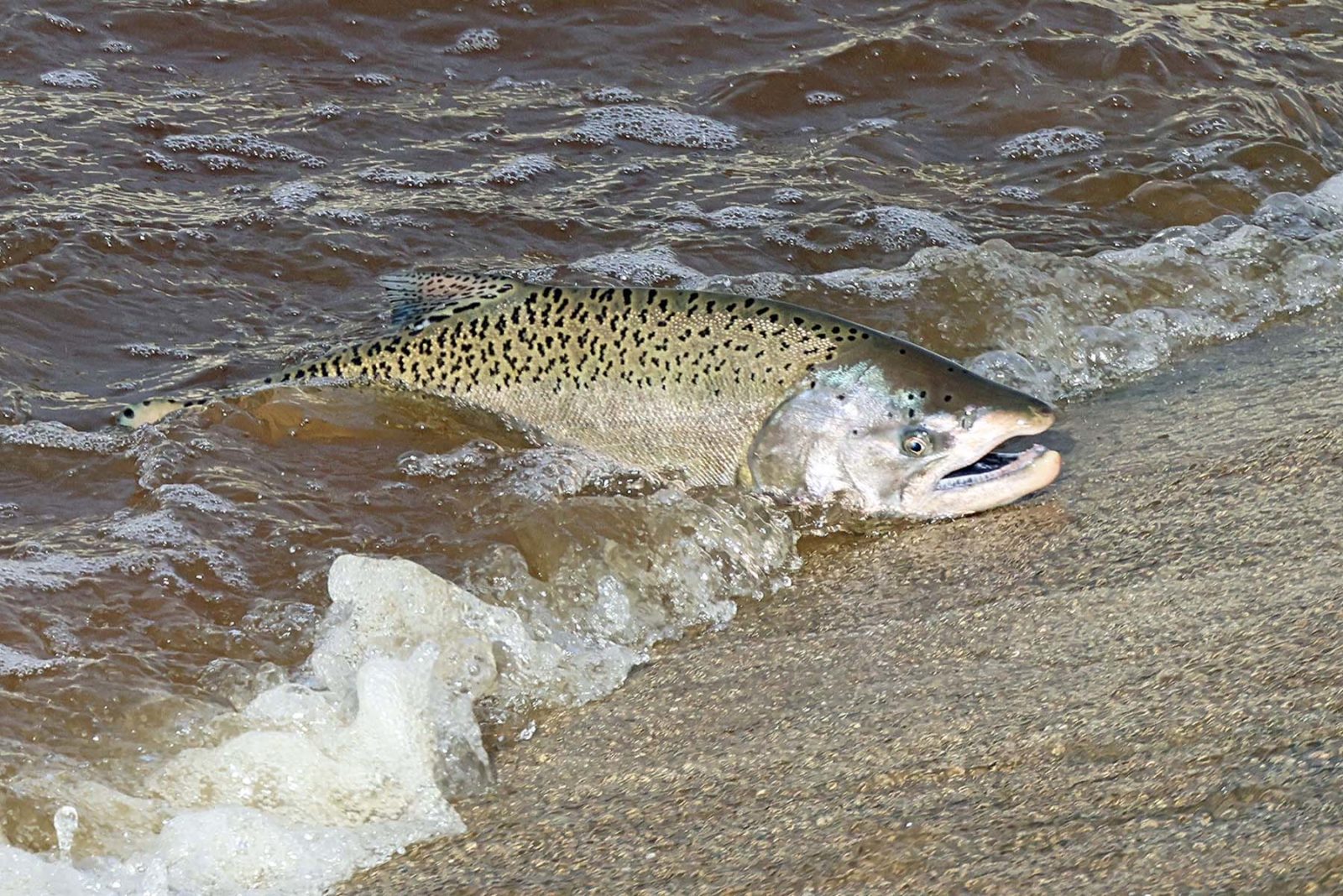
The Chinook salmon that made it up Alameda Creek this year have been stuck behind the BART weir since the October rains. “They’re jumping and leaping at this barrier and they can’t get over it. They’re sliding back down, exhausting themselves – it’s just heartbreaking to see it,” Miller said.
A $40 million fish ladder is currently in the works at the BART weir site, and Miller said he expects that the ladder will be fully functional for the 2022 fall-run Chinook salmon migration. This fish ladder is a critical piece of the puzzle when it comes to re-establishing the ability of Chinook salmon to migrate up Alameda Creek into the upper watershed toward the Sunol Wilderness, a migration route which has been lost for about 50 years.
CDFW oversees the release of several million hatchery-reared Chinook smolts every year, Neillands wrote. The Feather River Hatchery alone produces nearly 8 million fall-run Chinook salmon annually, he added.
The fall-run Chinook salmon of Alameda Creek, many of which belong to hatchery-origin lineages, are not considered a native species, and they do not qualify for CDFW permits which would allow for their release upstream of the BART weir blockage. In contrast, the steelhead trout of Alameda Creek, which are considered native and threatened, are granted permits by the CDFW which allows for their release upstream, something that the Alameda Creek Alliance has been involved in for years. In fact, the new fish ladder is primarily meant to help the steelhead trout – the salmon will just be beneficiaries.
“It’s a tough era to be an organism that’s dependent on freshwater,” Miller said, even when the weather cooperates. At the same time, he added, watching Chinook salmon in the Bay Area offers everyone insight into connectivity and health of Bay Area waterways. “They are,” he said, “really good ambassadors for protecting our creeks.”


